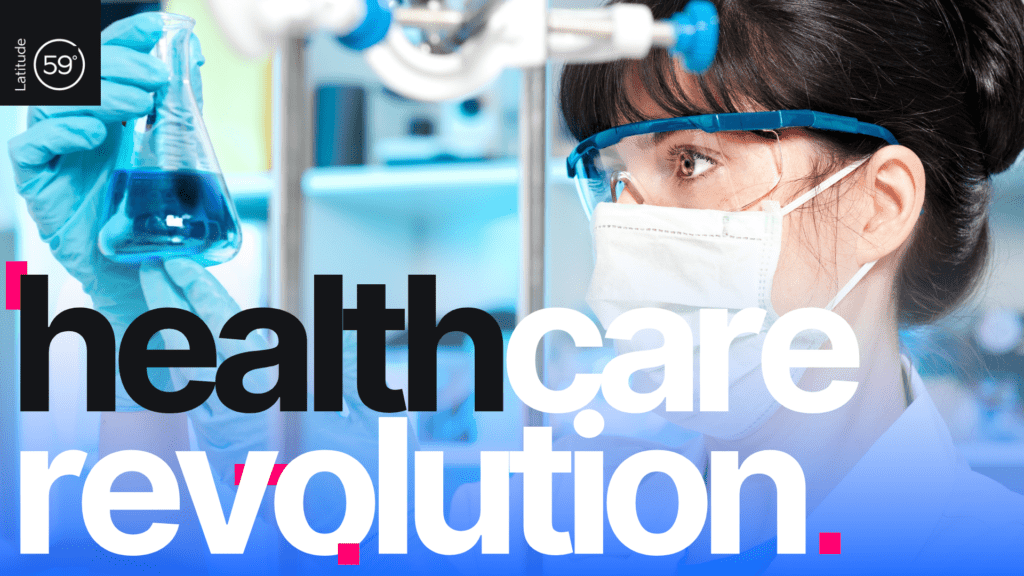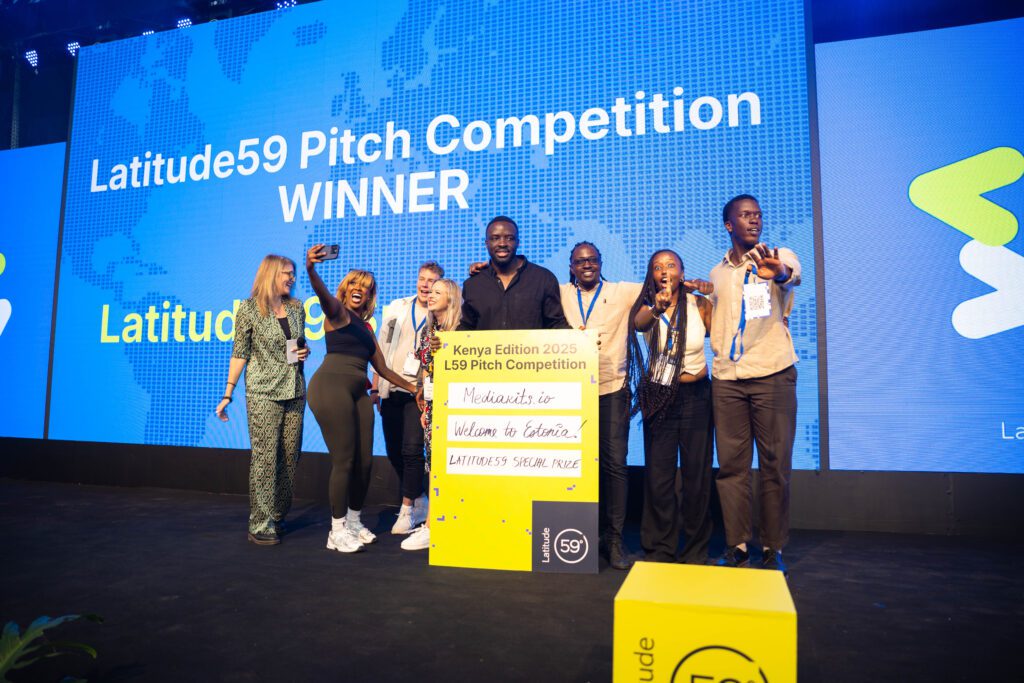TalTech is joining forces with Tehnopol to organize a joint workshop at Latitude59 on May 24, 2024. One of the focus points is on Scandinavian best practices in health tech. To open the topic, we conducted an interview with one of the panelists Kenneth Salonius, the CEO of Vertical, a Finnish healthcare consultancy firm.
You are the CEO of Vertical, please tell us a little bit about yourself and your background.
I’m an entrepreneur at heart, driven by a passion for transforming healthcare through innovation. My journey started with founding a medical imaging company, where I gained firsthand experience with the complexities and immense potential of hardware development in this field. In 2012, I co-founded Upgraded, Finland’s health startup association. Before its merger with HealthTech Finland a year ago, we supported over 500 health and wellness startups on their growth trajectories.
At Vertical, we believe in the power of collaboration to drive positive change in healthcare. Since our founding in 2014, we’ve evolved from helping startups bring their solutions to market to developing healthcare processes and providing change management support. These three pillars work together to create meaningful, sustainable impact.
What interests you the most in the field of health tech?
Healthcare is a complex ecosystem, but technology offers the potential for more effective and timely treatments, freeing healthcare professionals to focus on holistic patient care. Technology empowers us to augment human skills and improve lives. I’m particularly interested in the synergy between technology and change management in healthcare. The advancements in AI in recent years (and the global awareness of this development) are truly exciting, and I’m eager to explore how they can be leveraged to enhance care delivery.
What do you see as the most prominent health technologies/fields that will shape the
future?
The next decade will undoubtedly witness significant advancements in healthtech across various domains. While the initial enthusiasm for wearables we saw 5-10 years ago may have plateaued, I believe technologies that deepen our understanding of human physiology and behavior are becoming increasingly pervasive. The Oura ring exemplifies this trend, and Samsung’s upcoming smart ring is ready to push this technology into the mainstream. Imagine a future where such wearables seamlessly integrate e.g. non-invasive blood glucose monitoring and intelligent assistants that understand your unique habits and lifestyle for a person with diabetes. This is just a glimpse of how technology can empower individuals to proactively manage their health.
How to approach different healthcare organizations/partners as a startup?
The key is to remember that the role of healthcare organizations is to provide care, not to help companies develop new solutions. Keeping this in mind, when planning to approach these organziations, consider who is the client – is the organization you speak to your client, or are you their’s? Are you selling your solution, or trying to buy validation?
Some organizations have dedicated contacts or testbed programs for startups. If not, consider reaching out to department heads. Once you have a validated solution, getting decision makers aware and convinced of the benefits of your solutions – and eventually participating in a public procurement is a likely route.
How to design your solution to be patient-centric, what are the key factors to keep in mind?
As simple as it sounds – make the end-user the starting point for your creation. Empathize with the patient and put yourself in their shoes to understand their challenges, fears, and desires. Actively involve patients in your development process, and be ready to accept that each patient is unique – and find ways to personalize where needed. Ensure that your end product is accessible to all patients, regardless of their age, ability, or background. Make your user interface and
support channels easy to use and user friendly – looping back to empathizing with your patients. In the end, don’t leave it there – gather regular feedback from patients and healthcare providers to identify areas for improvement – and execute on those.
Please share your insight about the collaborations that have given the biggest impact in the
field of healthtech?
One of my personal favorites is the collaboration that we initiated between Pfizer and a small startup called Sidekick Health several years ago. Eventually, going from a small local pilot with their team of a dozen people, the collaboration grew to global scale between the two. Sidekick Health has grown to several hundred employees and has very successfully been able to grow within the pharmaceutical industry.
Among my main learnings for this is that working within this industry, we need to accept and prepare for the fact that patience is paramount in this industry. It’s not the fastest horse that will win, but the one with the longest endurance.
As entrepreneurs, we must be ready to navigate uncharted territory and embrace the fact that what we are building might not be recognized by existing treatment guidelines or regulatory frameworks.
Please share some tips fot Estonian healthtech startups entering into Finnish market? What
are the steps before entering a new market in the EU and outside of the EU?
Whether you’re a startup or an established company, successful market entry requires meticulous research, strong networks, and a commitment to adapting to local needs. Understand whether the problem you are solving exists, and where your solution can be adapted. In my experience helping startup companies with market entry, your network in the target market has a very central role for your success – building your understanding of the local culture, your
solution’s fit to that, understanding of the local regulatory environment, the healthcare system.
Not to forget e.g. local government support and resources. In the end, you will likely need localization of your solution, and native support staff for your solutions. The Finnish healthcare environment is currently undergoing major restructuring, making both financial and time resources in the public sector severely limited. This, while creates a challenge
for market entry, can also be an opportunity – we are in dire need of solutions that can improve access to care.
Understand the Finnish healthcare landscape, including its cultural nuances and regulatory environment. Build relationships with local stakeholders, and don’t overlook government support resources. Localization of your solution and having native support staff are often essential.
What recommendations do you have for universities like TalTech and science parks like
Tehnopol to support the development of spinoff companies and R&D activities in the
Healthtech Ecosystem?
Estonia has a strong track record in e-health and digital innovation. Capitalize on this expertise by focusing on areas like telemedicine, digital therapeutics, and AI-powered healthcare solutions. Establish partnerships with hospitals, clinics, and other healthcare organizations to enable efficient validation of solutions. Due to Estonia’s relatively small home market, build a strong internal network for further validation, localization, and scaling to international markets at an early stage. To support this, instill a strong “glocal” mindset to all activities – meaning that the new solutions should be planned for global scaling, but always enabled to local implementation – with a patient-centric mindset.
What to expect from the upcoming seminar? / Why should people attend the HealthTech
seminar in Latitude59?
Expect a deep dive into the best practices of scaling your business in the healthcare industry, hearing from both experienced entrepreneurs like Priit Kruus from Dermtest and investors like Alexandra Gylfe.
Want to hear more? Don’t forget to visit TalTech’s workshop “Technology leading the next healthcare revolution: Insights of Scandinavian best practices” on May 24 at 11:30 in the D-hall, during Latitude 59 2024.



